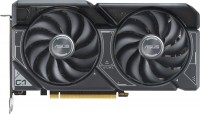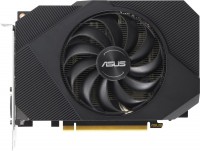Graphics Cards Asus series Turbo (turbine)
prices on 2 modelsAsus Turbo series (turbine)
The Asus Turbo line includes specialized graphics cards with a centrifugal fan instead of the classic system with multiple fans. Representatives of the Turbo series work according to the following principle: a single centrifugal fan is located in the closed casing, which drives air through the radiator and throws it outside the case. The key feature of the Asus Turbo family was the "turbine" of the cooling system, which makes it related to the reference versions of GeForce graphics cards.
 |
Due to the features of the turbine, air circulation inside the housing is simplified. Excess heat does not remain inside the case and additionally does not heat the motherboard, with a processor and SSD, so this option is perfect for compact enclosures with poor ventilation. In addition, video cards of this format in most cases are thinner and shorter than their air-cooled counterparts, so it is easier to place a tower cooler for a powerful processor or several video cards in SLI/ Crossfire mode in the case.
Due to the peculiarities of cooling and power supply, representatives of the Turbo series cope worse with overclocking and rarely squeeze out more than 5-7% to the original core frequency. You should not count on the performance of the ASUS Dual and ROG STRIX models. However, this compensates for lower prices on Turbo models. The second feature of the centrifugal fan that is worth paying attention to is the noise level, which becomes an unpleasant surprise for many gamers. Unlike classic air cooling systems for 2-3 coolers, a centrifugal fan works on cooling alone, so most Turbo models have to find the right balance between the speed of rotation of the cooler, the temperature of the video core and its frequencies.







